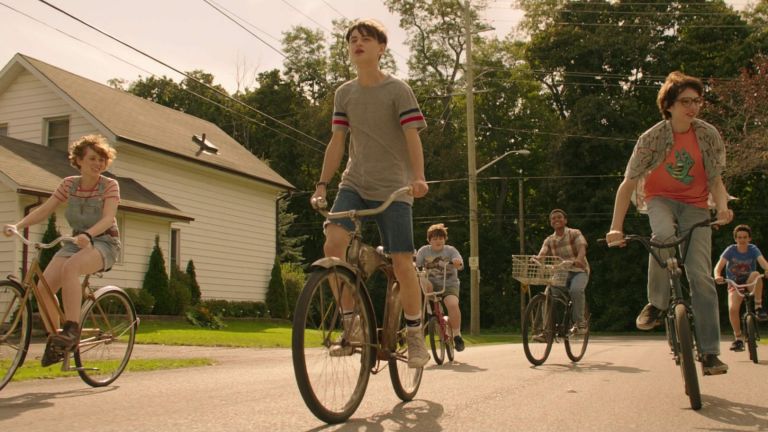If you’re familiar with David Fincher movies, you know they focus on serial killers, robbers, brawlers, and murderers alike. You might also know that he has a reputation for being an exacting, obsessively technical director. However, dark subjects and visual meticulousness belie Fincher’s overlooked secret weapon: his ability to connect with actors on a human level to draw out authentic and defining performances. This humanity, this messy warmth, doesn’t simply transcend Fincher’s bleakness and robot-like technical rigor: it exists because of it. That’s the genius of David Fincher films.Continue reading The Directing Style of David Fincher
Structural irony is born when the characters are completely unaware of the situation they are in. Often, this is due to their lack of intelligence or ignorance. Either way, this subtype of situational irony is a foolproof recipe for comedy but it also works in drama as well. We're going to dive into this subject with a definition and examples so you can see how it works and apply it to your next screenplay. Continue reading What is Structural Irony? Definition and Examples for Screenwriters
Karma can be a very satisfying element in storytelling and that's exactly what poetic justice (aka poetic irony) can provide. There is a risk that the attempt at poetic irony might come across as trite or unrealistic but when it works, it works. What is poetic justice? Let's define it with a couple of examples to give you an idea of how it can be done well with the satisfaction quota met.Continue reading What is Poetic Justice? Definition and Examples for Screenwriters
When you want feedback on your script or when you’re heading into production, communication is essential. This usually involves a series of emails, phone calls, or handwritten notes--all from different sources. These become difficult to organize and easy to lose.When you’re working with a project in StudioBinder, there’s no need for external apps, Word documents, or texts between you and your team. Knowing how to collaborate will keep you and your team on the same page...literally.This article will show you just how useful and efficient collaborative script writing is in StudioBinder by using Comments and Tasks.Continue reading How to Collaborate…
A masked killer with a signature weapon. A group of victims anchored by a Final Girl. And a structure that evenly disperses the death and mayhem. Even people who don’t watch slasher movies know the game. The look and feel of these movies have become baked into pop culture. This has happened to such a degree that even non-slasher movies can’t escape their influence. What follows is a list, in no particular order, of the best slasher movies that don’t technically qualify as such.Continue reading The Best Slasher Movies (That Aren’t Slasher Movies)
There are many types of irony out there. Within the main branch of situational irony lies a version with a supernatural twist⏤cosmic irony. The main thrust of this series is getting writers to embrace irony as a tool that will add a level of depth and nuance to their work. How do you define cosmic irony? In this chapter, we’re going to specifically talk about this most “fateful” form of irony. Continue reading What is Cosmic Irony? Definition and Examples For Screenwriters
Best Shyamalan Movies Shyamalan's Style Explained The Return of M. Night Shyamalan I’ve been a fan of M. Night Shyamalan for years, and that includes the 9-year gap between Lady in the Water and The Visit when it was challenging for everyone involved. I don’t love every Shyamalan movie, but I don’t despise his misfires either — they’re objectively not good, but I do what everybody should do and ignore them. The last few years, however, and I’m not alone on this, Mr. Shyamalan has been quietly making a comeback. And this makes the Shyamalan apologist in me very excited. It’s…
Sidney Lumet directed feature films and television for over 50 years. In other words, we can learn a lot from his perspective about the film business and film directing. We were lucky enough that Lumet decided to share these thoughts in book form. "Making Movies" by Sidney Lumet is an invaluable resource for any filmmaker. In particular, we're going to review Lumet's idea of a "lens plot," its three variations, and how you can use these concepts in your next project. Continue reading What We Can Learn from “Making Movies” by Sidney Lumet
Best Tarantino MoviesQT's Directing StyleQT Directing Tips QT DialogueOnce Upon a Time AnalysisBasterds Breakdown Speculation about Tarantino's last movie has now reached full tilt — but are we really ready for Quentin Tarantino's Star Trek? There is only one final film to go before we find out if QT was bluffing or not. But what should it be? For us fans, what would be a satisfactory swan song?Quentin Tarantino movies are special — we know this because Tarantino lets us know how special they are. It all started with Kill Bill Vol. 1 when the poster informed us that this…
The second and concluding chapter in director Andy Muschietti's adaptation of Stephen King's It is here. The Losers Club are all grown up as they return to their childhood town to battle inner and outer demons. The cast is impressive, the visuals are stunning, and the imagination on display is undeniable. But that doesn't translate to a successful film overall. Chapter Two goes big on design, creativity, and spooky spectacle, but doesn't provide a satisfying conclusion for characters so expertly crafted in Chapter One. Continue reading “It Chapter Two” Review: Bigger Not Better



















